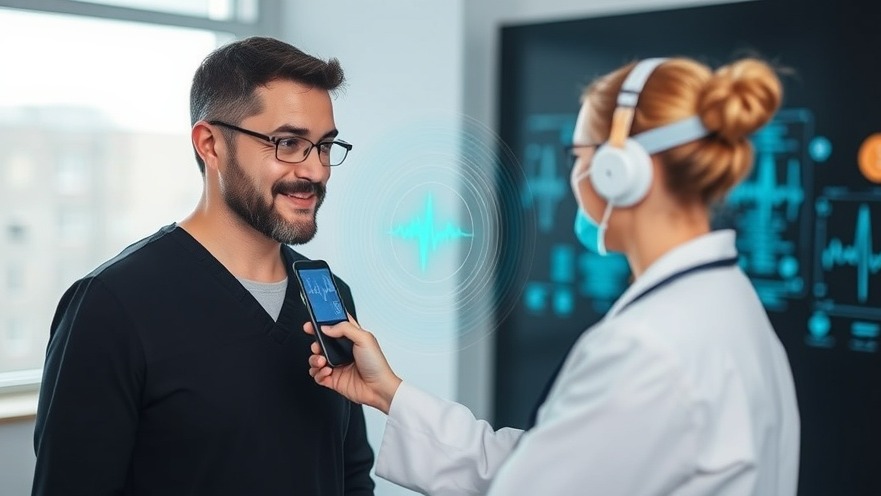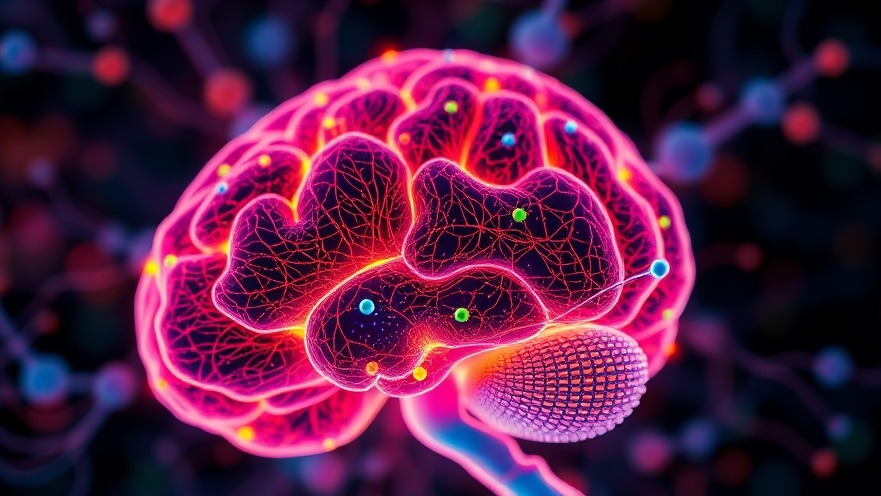
Revolutionizing Remote Health Monitoring with Radar Technology
In an age where health monitoring technology is continuously evolving, the introduction of radar-assisted technology offers new possibilities, particularly for health practitioners seeking innovative solutions for patient care. Imagine checking someone's pulse from across the room—this is no longer a distant dream but a developing reality due to advancements blending radar systems with artificial intelligence.
The Science Behind Radar Monitoring
Radar technology has long been associated with applications such as aviation and weather forecasting. However, the fundamental physics behind radar—sending out electromagnetic waves to detect movements—can be applied to monitor vital signs too. Every heartbeat and breath leads to minute movements of the chest that current radar systems are now sophisticated enough to capture from a distance. This methodology allows for monitoring without physical contact, presenting a more comfortable and less invasive option for patients, particularly those who are elderly or bedridden.
The Advantages of Noncontact Monitoring
For concierge health practitioners, the advantages of radar-based health monitoring systems are substantial. Firstly, radar technologies do not rely on direct contact, effectively sidestepping common issues linked with traditional health monitoring equipment like fingertip pulse oximeters and smartwatches, which often require close proximity to work effectively. This can be particularly beneficial in environments where comfort, privacy, and ease of use are paramount.
Addressing Privacy and Accessibility Concerns
In addition to being non-invasive, radar technology alleviates privacy concerns associated with camera-based monitoring systems. Traditional methods using infrared light and high-resolution cameras may inadvertently capture sensitive data, leading to potential breaches of patient confidentiality. Radar's ability to monitor without visual observation means respecting patients' privacy and fostering a more secure health monitoring environment.
Comparing Radar Technology to Current Methods
While cameras and infrared monitoring techniques have shown promise, they face limitations. For instance, low lighting and physical obstructions (like blankets) can impair the accuracy of readings. Beyond that, there's growing evidence that these camera-based solutions can produce varied results based on skin tone, potentially resulting in health disparities among diverse populations. Radar technology, in contrast, functions consistently across different conditions and is immune to these biases.
The Future of Health Monitoring
The increase in radar technology utilization in health monitoring hinges on collaboration between engineers and healthcare professionals. This integration can lead to better design and functionalities that cater specifically to healthcare applications. As radar technology continues to advance, we can expect improvements in the accuracy and reliability of remote health monitoring systems, making them an essential tool for preventive medicine and chronic disease management.
Personalizing Patient Care Through Technology
Understanding vital signs remotely allows practitioners to personalize care strategies. By adopting radar monitoring systems, healthcare providers can continuously analyze data trends and respond proactively to patient needs, ultimately enhancing outcomes and efficiency. This proactive approach signifies a shift towards a more connected healthcare ecosystem where patient data is readily accessible.
Actionable Insights for Health Practitioners
For health practitioners keen on improving patient care, exploring radar technology may yield substantial benefits. Engaging with suppliers developing radar-based health monitoring systems, attending relevant workshops, and keeping abreast of technological advancements can position practices at the forefront of health innovation. Such engagement ensures healthcare providers offer cutting-edge solutions to improve patient outcomes, reflecting an adaptive and progressive practice ethos.
In a world where convenience and efficiency can distance healthcare delivery, the evolution toward radar-assisted monitoring stands as a beacon of what's possible in patient care. Consider embracing this technology to facilitate seamless interactions with your patients and cultivate a future where health management becomes less intrusive and far more effective.
Conclusion
As radar technology continues to mature, it is transforming the landscape of health monitoring. Practitioners who are proactive in understanding this innovation can enhance their practice and offer better, more personalized care to their patients. Therefore, stay informed and consider incorporating these groundbreaking solutions into your practice for a healthier future.
 Add Row
Add Row  Add
Add 




Write A Comment